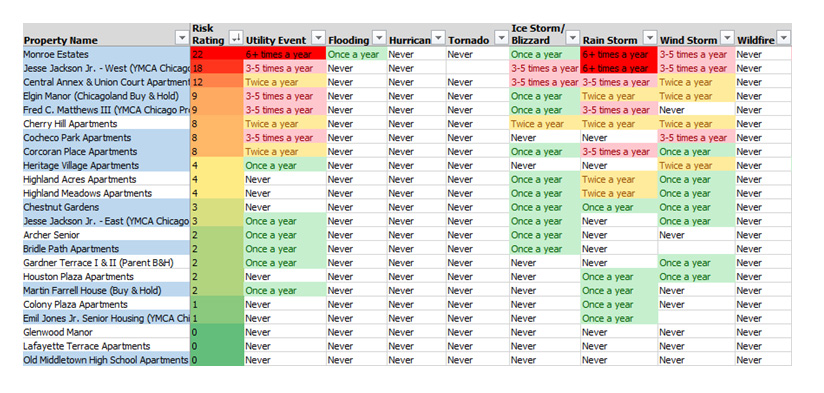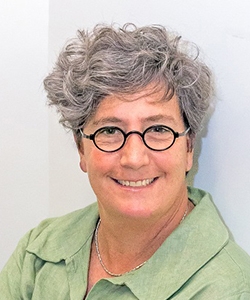Resilient Strategies for Affordable Housing: POAH’s Approach to Long Term Sustainability
As part of his preview of policy priorities, President Biden announced his administration would be devoting considerable resources to dealing with the devastating effects of climate change. Over the past several years, Preservation of Affordable Housing has been developing our own strategy to protect our 120 properties from the negative impacts of diverse weather events across the country. From hurricanes in Florida to ice storms in New England, and tornadoes in Missouri, extreme weather necessitates planning for the unforeseen and ensuring the safety and comfort of residents and staff.
POAH’s resiliency strategy includes employing Design and Building Performance’s Basis of Design (BOD), a product selection resource that guides design teams and staff to install building components that meet established building product and/or performance standards. Our BOD is used for new developments and those being renovated as well as when making capital repairs to the owned-portfolio. This includes developing a new Generator and Resiliency Strategy section, which recommends among other things, that some back-up power be in place and a resident and staff “area of refuge” be established.
Current building codes require back up power for certain systems not specifically related to weather events and prolonged power outages. Generators, to the extent they are installed at property sites, were generally limited to carrying certain code-required items such as hallway lighting, life-safety systems, and elevators. POAH’s current approach when replacing a generator or constructing new housing is to ensure not only that all current code required loads are included, but also to carry the loads in an ”area of refuge” - typically the community space and management offices on the first floor. These spaces allow for residents to gather comfortably in an area with heating or cooling and ventilation, hot and cold water, power outlets, and refrigeration for medication.
A great argument for passive house certification or deep energy retrofits is the design and construction of a robust building enclosure. Making the enclosure air-tight and adding continuous insulation can create a stable interior temperature, allowing residents to stay housed in power outages during winter and summer months for days at a time. Additionally, actions such as improving the enclosure and thermal performance lower future energy costs. POAH has been incorporating passive house design into new construction projects and is pursuing deep energy retrofits at most rehab projects underway.
Incorporating solar storage systems at our projects is another resiliency strategy POAH is exploring for Bartlett Yard, a new development in Boston and at the Barry Farm redevelopment in Washington, DC. Not only can the battery serve as back-up power, it can also be integrated with the power grid, managing demand and charging when no emergency is present while remaining available for to support the area of refuge should one arise.
Creating a resilient portfolio requires awareness of each property’s vulnerabilities and capabilities. To address this, a comprehensive building survey was generated that includes ten sections, each representing a different system or building attribute. The first section we analyzed was power outage vulnerabilities (weather and utility events that cause outages) and capabilities (back-up power). We collected data from over 130 sites and learned about frequency and causes of outages and whether or not a generator is in place and what it powers. In the attached chart we identified many senior properties without a generator but with real vulnerabilities related to regular power outages.
Before conducting the survey, we did not have a comprehensive understanding of the frequency of weather events for our sites nor detailed records on what existing generators power. Efforts to gather this information will help us focus our next steps and inform the Generator and Resiliency Strategy BOD section.
Our next steps include:
- Soliciting proposals for new or upgraded generators at the most vulnerable properties;
- Refining what existing generators power to include the area of refuge, heating and DHW, if possible and;
- Exploring other methods of providing back-up power.
We learned a lot from this exercise and are once again reminded of the importance of pushing beyond what code requires for the health of our residents and long-term sustainability of our buildings. Creating resilient properties requires due diligence and is essential to effective design and management of affordable housing particularly as weather events become more frequent and intense.

